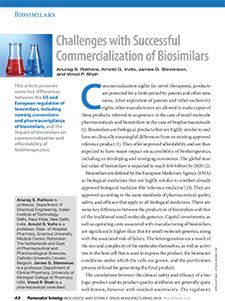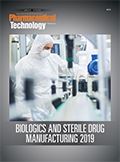Challenges with Successful Commercialization of Biosimilars
This article presents some key differences between the US and European regulation of biosimilars, including naming conventions and pharmacovigilance of biosimilars, and the impact of biosimilars on commercialization and affordability of biotherapeutics.

Commercialization rights for novel therapeutic products are protected for a finite period by patents and other measures. After expiration of patents and other exclusivity rights, other manufacturers are allowed to make copies of these products, referred to as generics in the case of small-molecule pharmaceuticals and biosimilars in the case of biopharmaceuticals. Biosimilars are biological products that are highly similar to and have no clinically meaningful differences from an existing approved reference product. They offer improved affordability and are thus expected to have major impact on accessibility of biotherapeutics, including in developing and emerging economies. The global market value of biosimilars is expected to reach $36 billion by 2020.
This article presents some key differences between the US and European regulation of biosimilars, including naming conventions and pharmacovigilance of biosimilars, and the impact of biosimilars on commercialization and affordability of biotherapeutics.
Read this article in Pharmaceutical Technology’s Biologics and Sterile Drug Manufacturing 2019 eBook.
Article Details
Pharmaceutical Technology
eBook: Biologics and Sterile Drug Manufacturing 2019
May 2019
Pages: 42–50
Citation
When referring to this article, please cite it as A. Rathore et al., "Challenges with Successful Commercialization of Biosimilars," Pharmaceutical Technology Biologics and Sterile Drug Manufacturing eBook (May 2019).
